Patrick Bogdanowicz 1,4囚 , Paul Bensadoun 2,4, Maïté Noizet 1 , Benoît Béganton 1 , Armony Philippe 1 , SandrineAlvarez‑Georges 1 , Gautier Doat 3 , AmélieTourette 1 , Sandrine Bessou‑Touya 1 , Jean‑Marc Lemaitre 2囚 & Hélène Duplan 1
1 R&D Pierre Fabre Dermo-Cosmétique & Personal Care, Toulouse, France.
2 INSERM IRMB UMR1183, Hôpital Saint Eloi, Université de Montpellier, Montpellier, France.
3 Laboratoires Dermatologiques Avène, Lavaur, France. 4These authors contributed equally: Patrick Bogdanowicz and Paul Bensadoun.
囚email: 该Email地址已收到反垃圾邮件插件保护。要显示它您需要在浏览器中启用JavaScript。; 该Email地址已收到反垃圾邮件插件保护。要显示它您需要在浏览器中启用JavaScript。
Intrinsic and extrinsic factors, including lifestyle and sun exposure, can contribute to cell senescence, which impairs skin homeostasis, that may in turn lead to skin aging. Senescent cells have a specific secretome, called the senescence-associated secretory phenotype (SASP) that includes MMPs, CXCLs and S100A8/9. Reducing the SASP with senotherapeutics is a promising strategy to reduce skin aging. Here we evaluated the effect of a formula containing niacinamide and hyaluronic acid, which are known to limit senescence and skin aging. We conducted three different studies. (1) Ex vivo explants treated with the formula had more collagen and glycosaminoglycan. (2) In a clinical trial with forty-four women, two months of treatment improved fne lines, wrinkles, luminosity, smoothness, homogeneity, and plumpness. (3) In a third study on thirty women, we treated one arm for two months and took skin biopsies to study gene expression. 101 mRNAs and 13 miRNAs were differentially expressed. We observed a likely senomorphic efect, as there was a decrease in many SASP genes including MMP12 and CXCL9 and a significant downregulation of autocrine signaling genes: S100A8 and S100A9. These pharmaco-clinical results are the first to demonstrate the senomorphic properties of an effective anti-aging formula in skin.
Aging is a multifaceted process, concerning many biological phenomena, including chromosome integrity, infammation, and cellular senescence, implicating most parts of the body1 . Senescent cells (SCs) are characterized by irreversible cell cycle arrest and a senescence-associated secretory phenotype (SASP)2,3 , including proinfammatory cytokines, MMP12 that degrades skin structure4 , and the ‘damage associated molecular pattern’ (DAMP) secreted molecules S100A8 and S100A95 . Additionally, SCs disrupt the balance between cell proliferation and cell death, leading to the accumulation of damaged cells and impaired tissue regeneration. Many findings suggest that elimination of senescent cells, by senolytic compounds, or reduction of the SASP, with senomorphic molecules, have benefcial efects on aging and lifespan. Other factors, such as ultraviolet (UV) overexposure, neuropeptides, neurohormones and hormone decline, are also involved in skin aging3,6 . Indeed, melatonin and its metabolites decrease during aging. Tese molecules possess antioxidant, anti-infammatory, immunomodulatory, and anti-tumor properties. Active forms of vitamin D3 and lumisterol derivatives also decline during skin aging7 . These vitamins are known to prevent, attenuate, or treat premature skin aging, through immunomodulation, antioxidative responses, and DNA repair mechanisms8 . Here we study a formula that includes several ingredients purported to act on cellular aging. The main active ingredient is 6% niacinamide, a.k.a Vitamin B3. This molecule has many beneficial effects, including reducing the harmful SASP and slowing entry of cells into senescence in vitro. Indeed, niacinamide can reduce infammation induced by environmental stressors and it helps prevent premature aging and maintain the skin’s overall
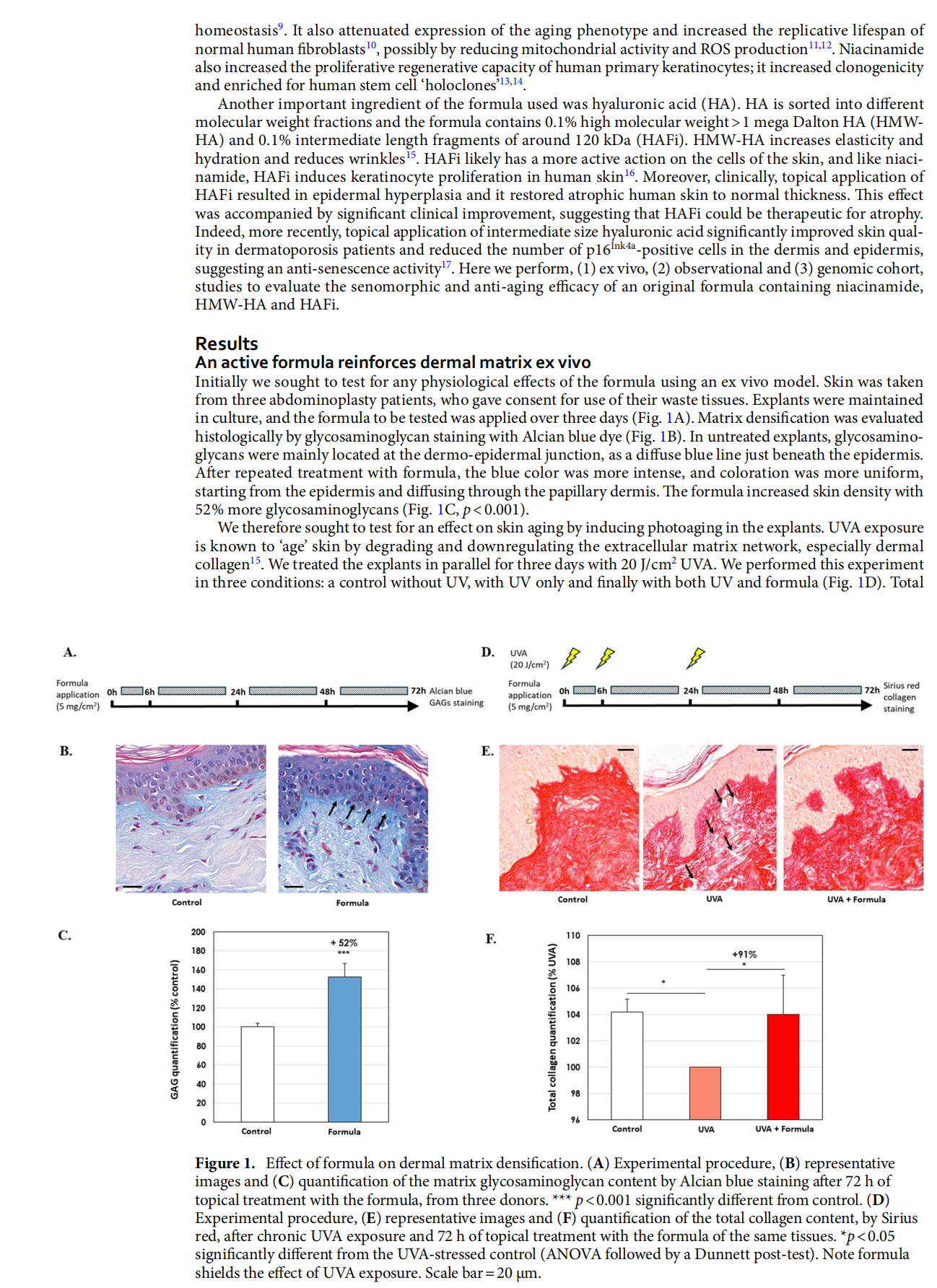
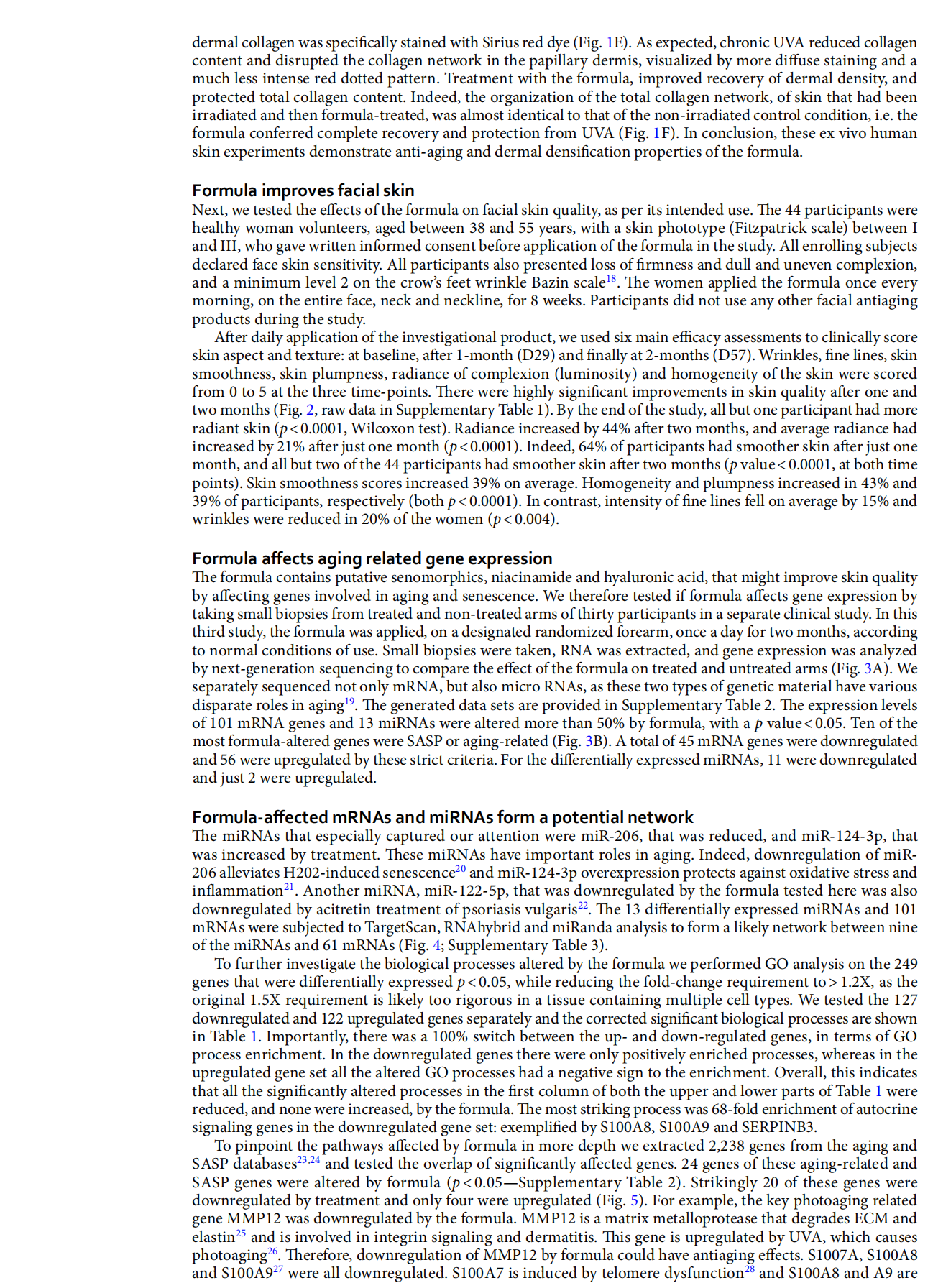

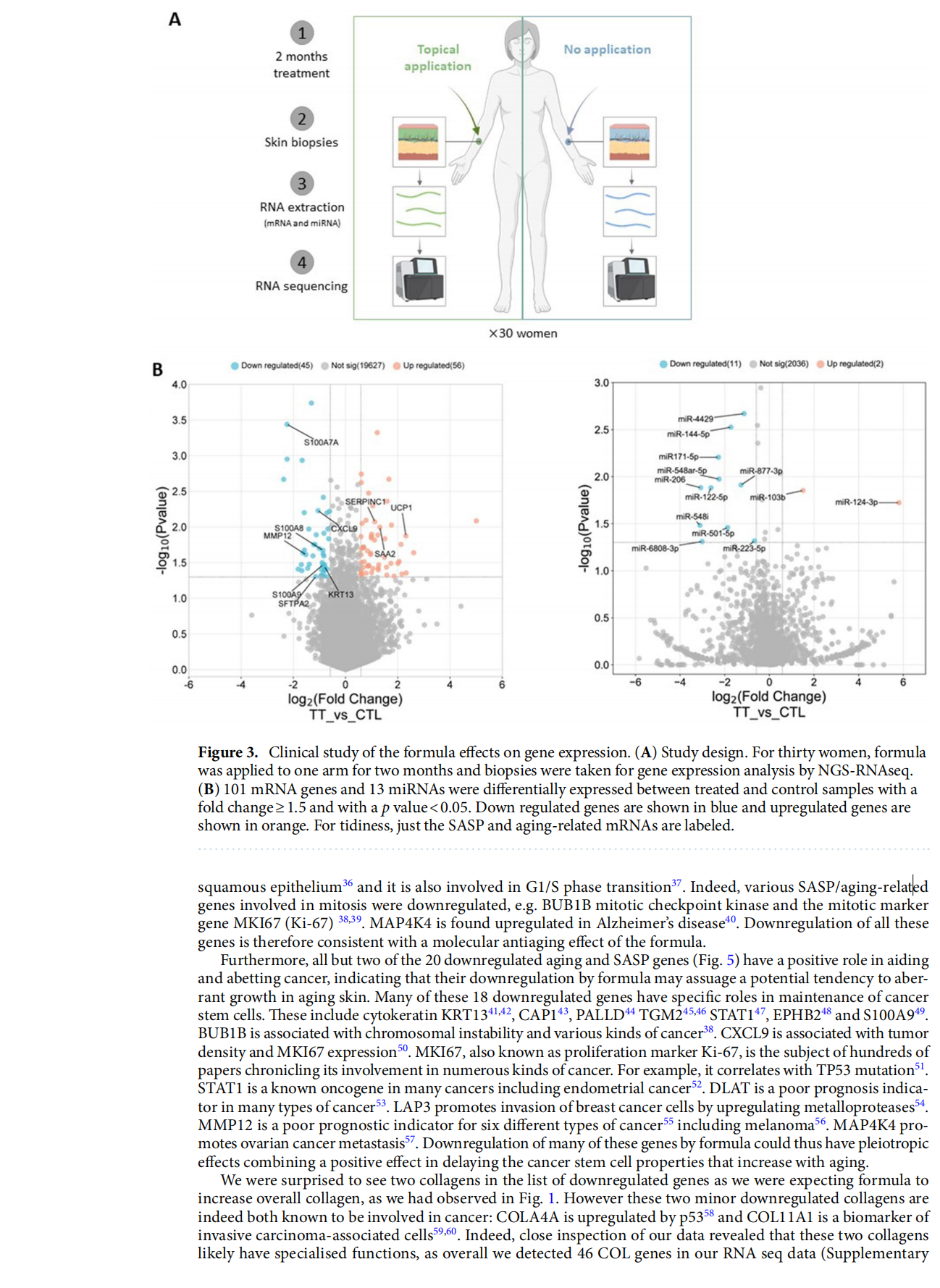
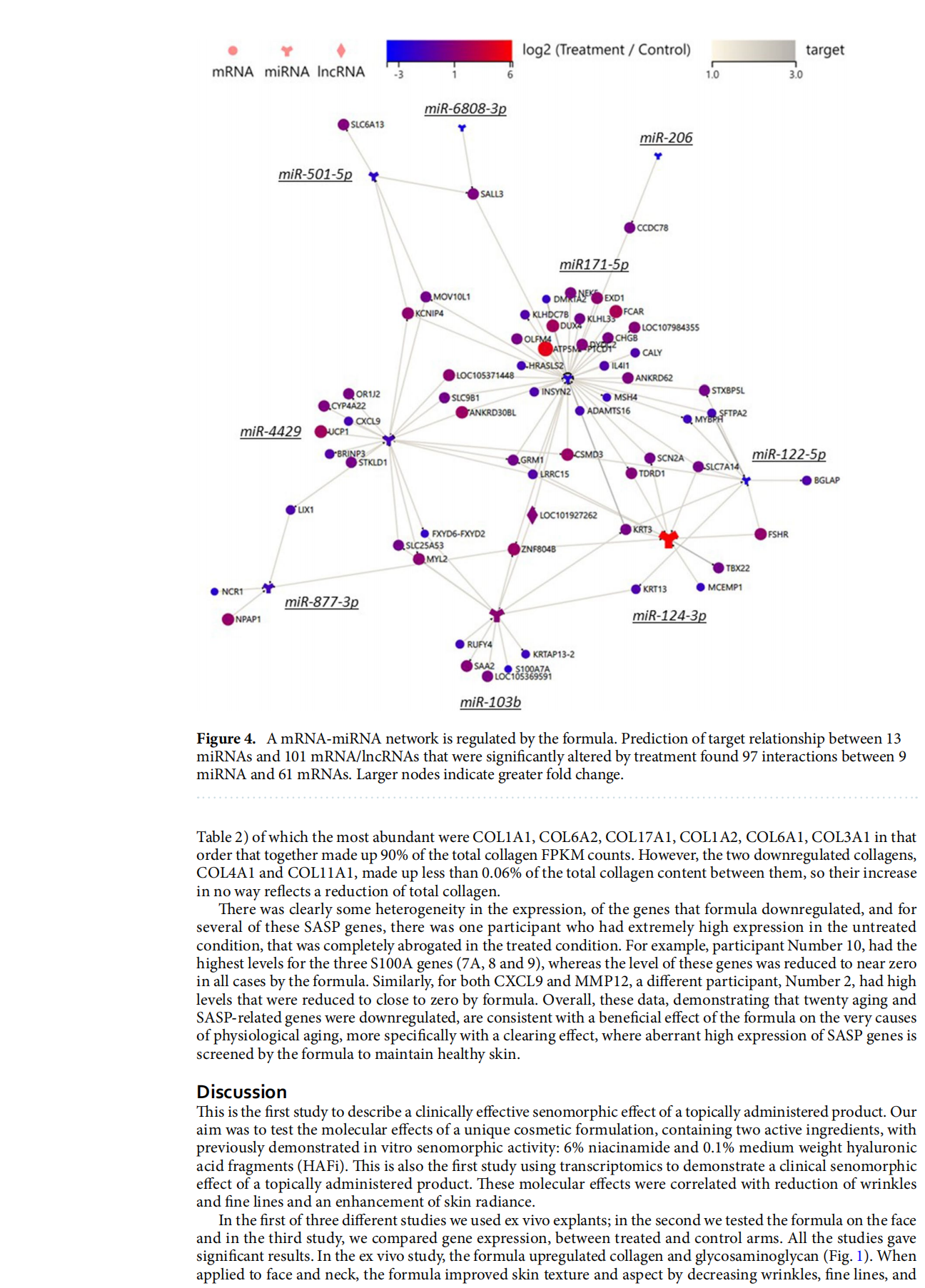
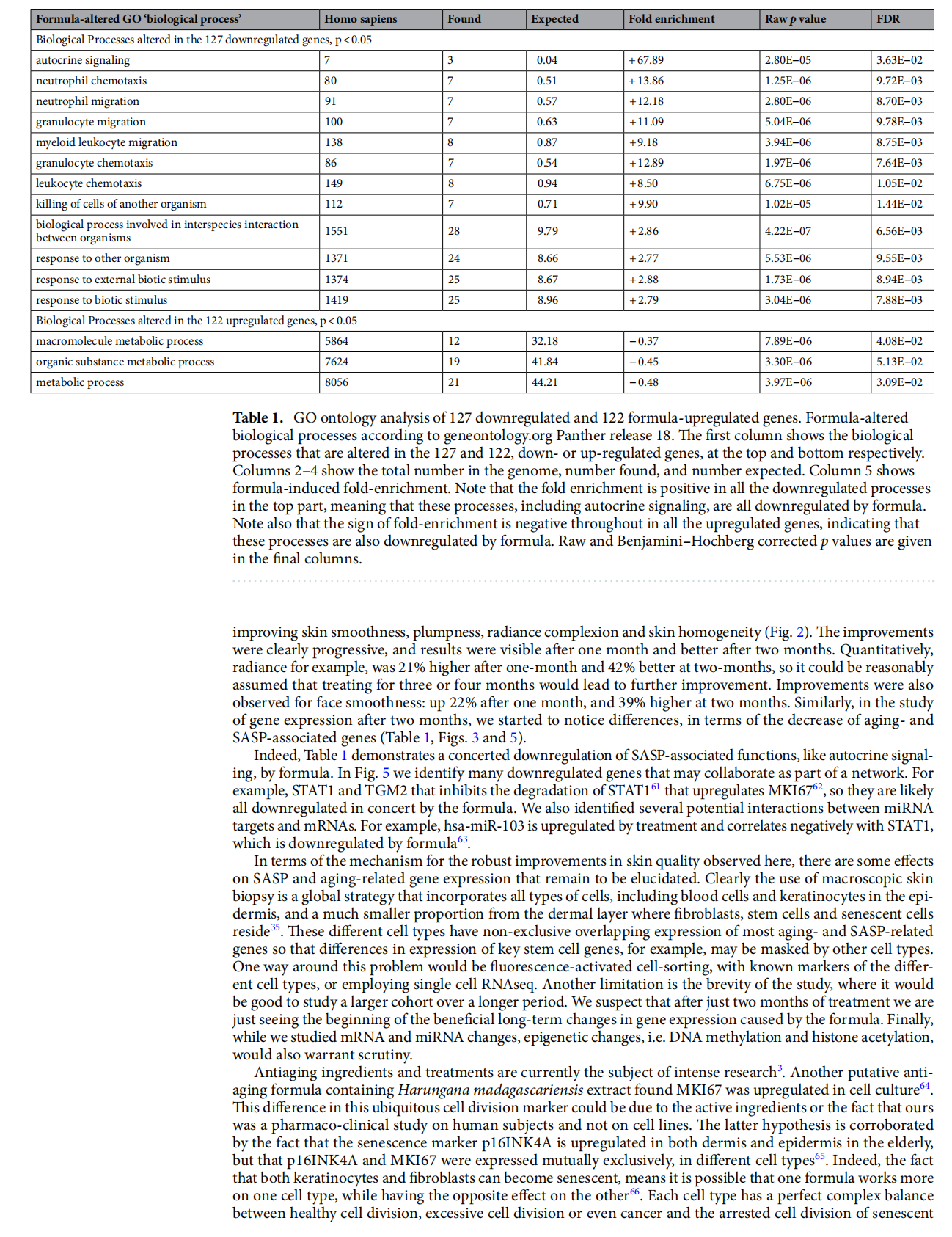
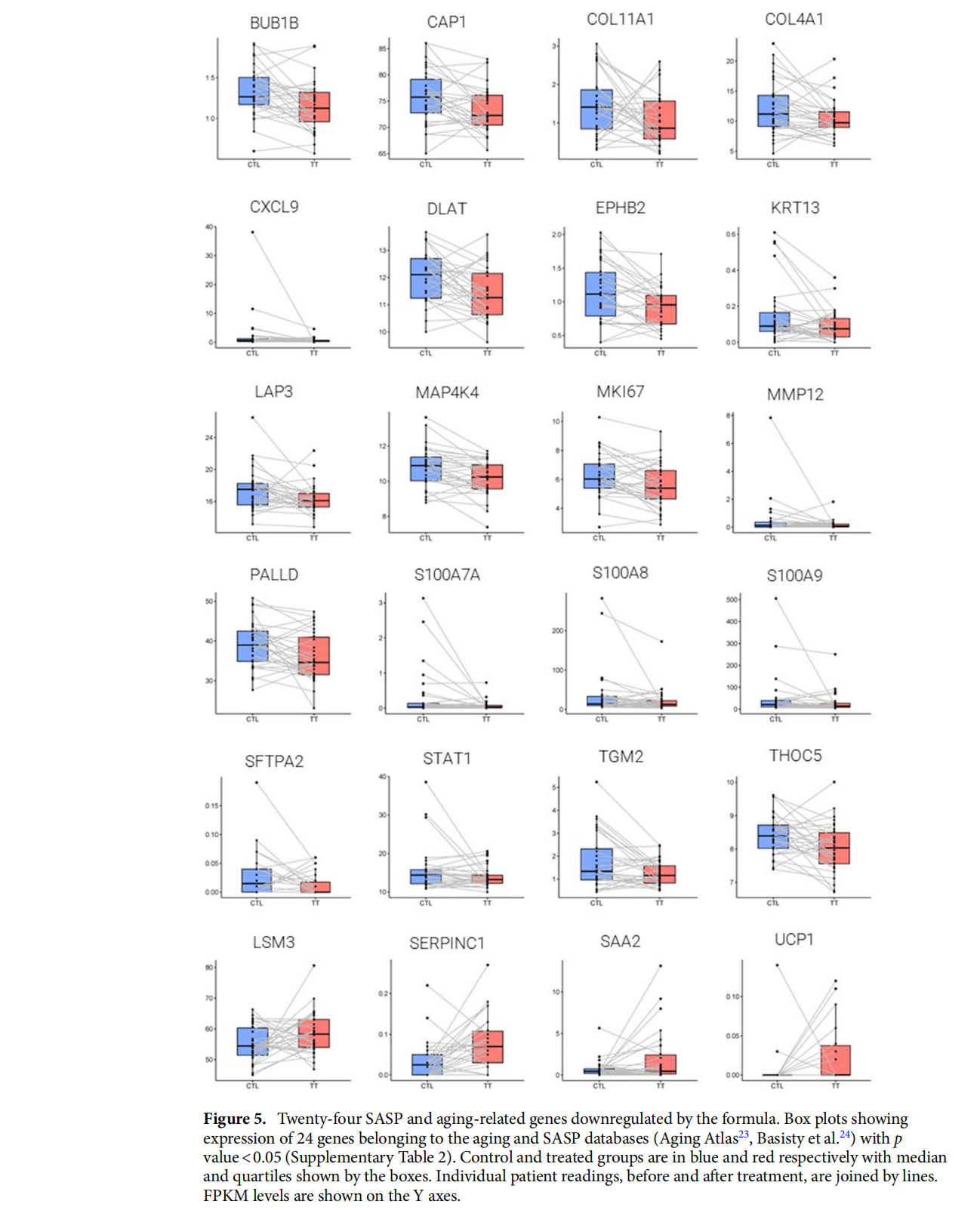

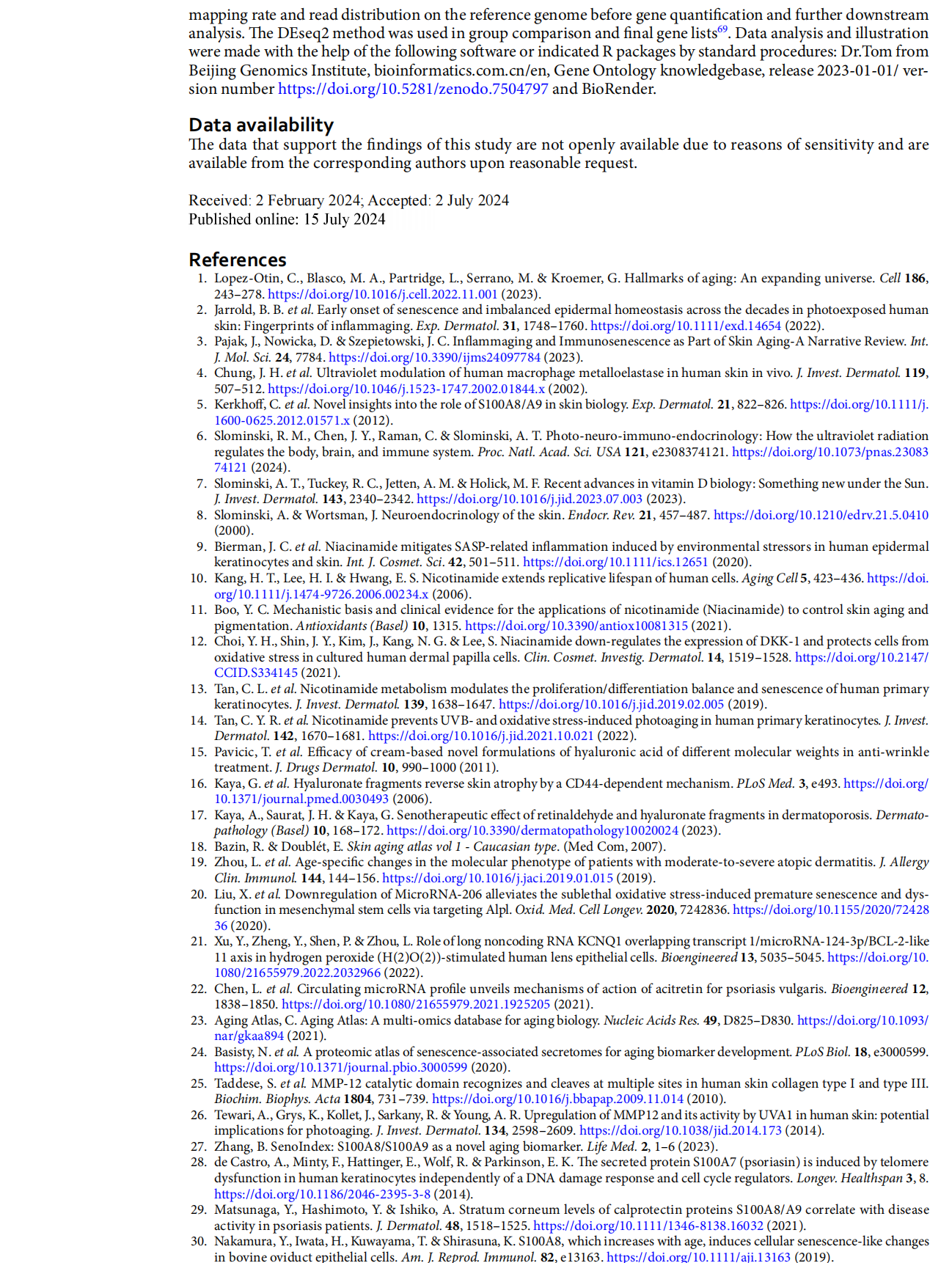
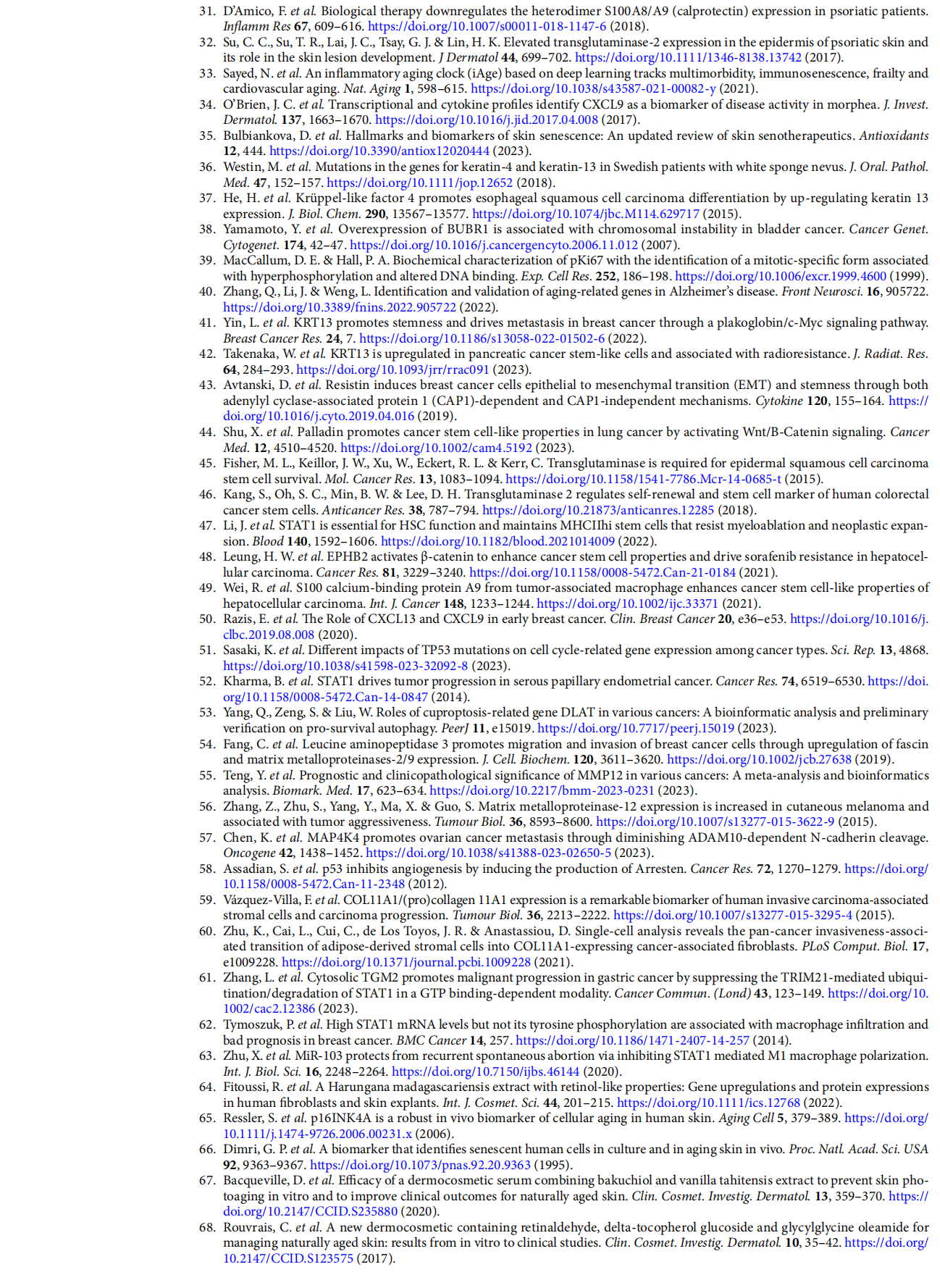
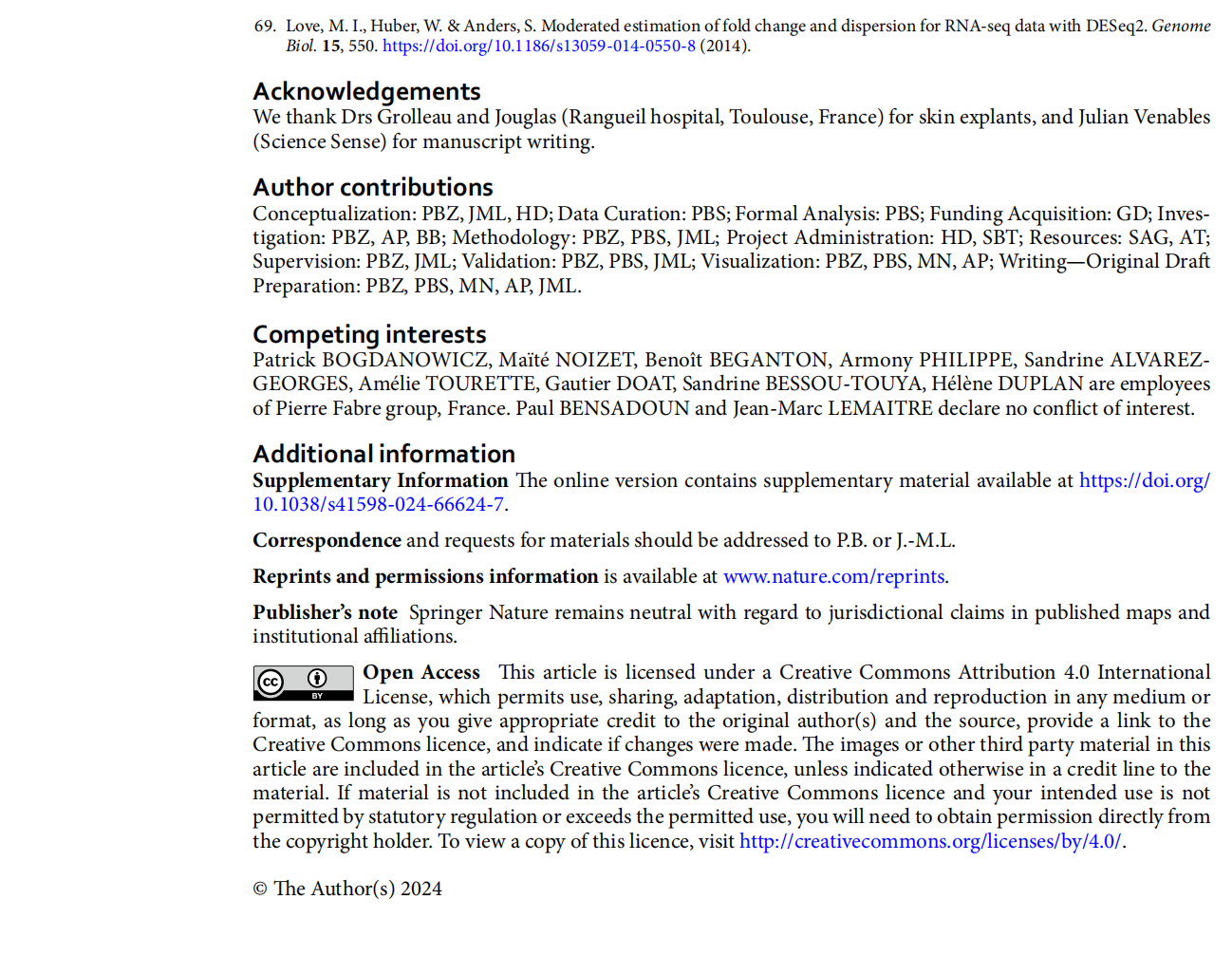
This article is excerpted from the Scientific Reports by Wound World.













